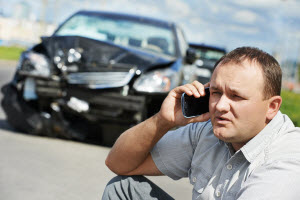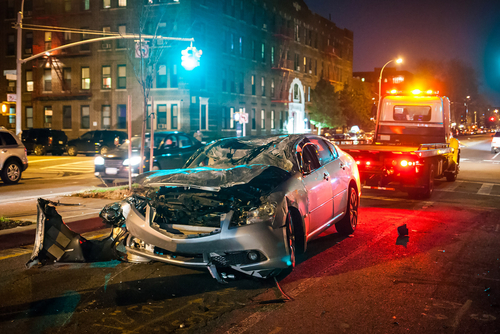As a car owner or as someone who drives a vehicle, you run the risk of being involved in an accident. Unfortunately, it’s just something that comes along with the convenience of being able to go wherever you want. However, that doesn’t necessarily mean an accident you’re involved in is your fault.
Sometimes, it can be tricky to tell who is at fault when you collide with another car in Brockton, Randolph, or Stoughton. To help you determine fault after a car crash, we at Collision 24 have put together this guide. Read ahead to learn more!
No-Fault States vs Fault-Based States
 Fault is dealt with differently depending on which state you live in. If you live in a fault-based state and you’re in a car accident, the person who’s at fault (and their insurance company) is accountable for vehicle repairs, medical expenses, and any other monetary expenses resulting from the accident.
Fault is dealt with differently depending on which state you live in. If you live in a fault-based state and you’re in a car accident, the person who’s at fault (and their insurance company) is accountable for vehicle repairs, medical expenses, and any other monetary expenses resulting from the accident.
As for no-fault states, each driver in the state is encouraged to be covered under Personal Injury Protection (PIP). When you’re involved in an accident in these states, your personal insurance company will pay for your medical expenses. However, any damage done to the other person’s vehicle is still fault-based, so your insurer will be responsible for paying these damages if the accident was your fault.
Fault-Based on Verbal Admittance
Right off the bat, fault can be detected if someone accidentally or intentionally verbally admits fault.
However, this isn’t the most common occurrence because outright admitting fault even before evidence of the accident is analyzed can bind you legally as being the one at fault. More commonly, people will accidentally admit fault with comments like…
- “I’m sorry.” – Even if you are sorry for the other person being in the situation, a witness or someone else at the scene can take this to mean you’re sorry for causing the accident.
- “I didn’t see you.” – This phrase is, more times than not, interpreted as guilt for you not paying attention.
- “I think the reason for the accident was…” – Statements of speculation of what could have caused the accident can be manipulated and used against you later on.
After an accident, you should avoid talking about the accident at the scene as much as you can to prevent yourself from accidentally saying any of these things.
Evidence Gathered at the Scene
 Another common way to determine fault after an accident is the evidence you collect at the scene. Evidence that you can use to show the fault is on the other driver includes…
Another common way to determine fault after an accident is the evidence you collect at the scene. Evidence that you can use to show the fault is on the other driver includes…
- Photos that you take of both vehicles, such as the damage and position of the vehicles before they’re moved off the road
- Videos taken by people who witnessed the accident or security cameras of businesses near where the accident occurred.
- Statements made by people who witnessed the accident
- Police reports that were made at the scene
- Physical evidence, such as transferred paint on the vehicles and skid marks on the road
Be sure that after you make sure everyone involved in the accident is okay, you gather as much evidence as you possibly can. Note everything about the scene because you never know what might come in handy later when you’re filing your insurance claim.
Involved in an Accident?
If you were involved in an accident in Brockton, Randolph, and Stoughton, you’re probably concerned about getting your vehicle fixed on top of determining fault. We at Collision 24 are happy to help you with that. Give us a call today to schedule a service appointment, so we can get your vehicle back to normal!
